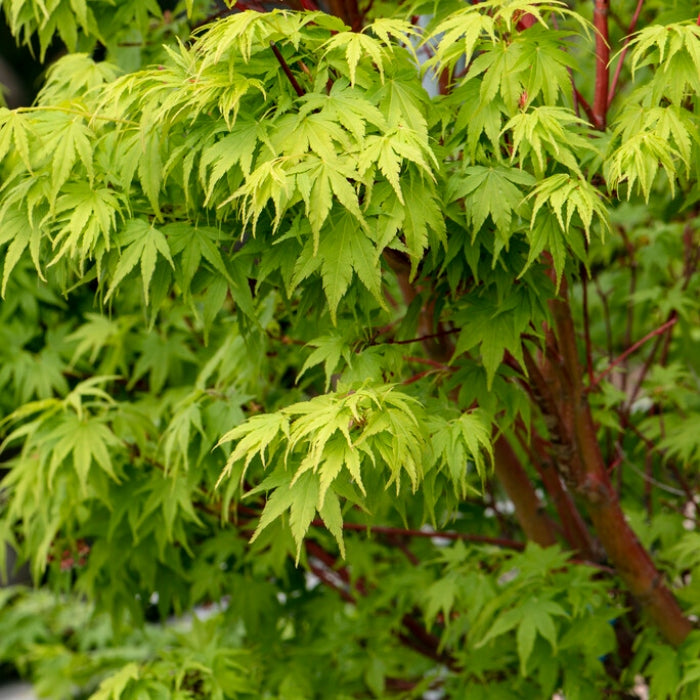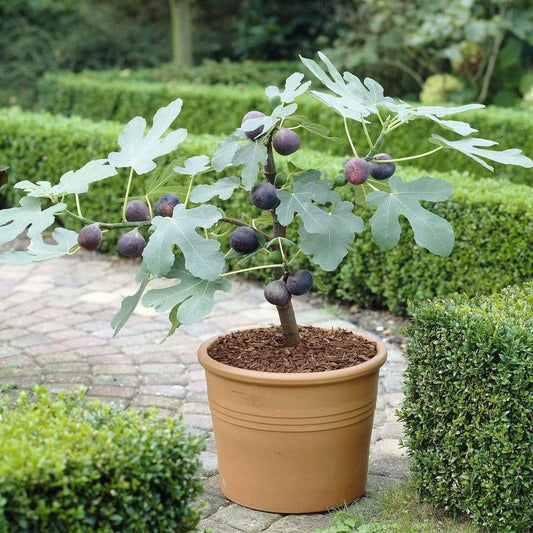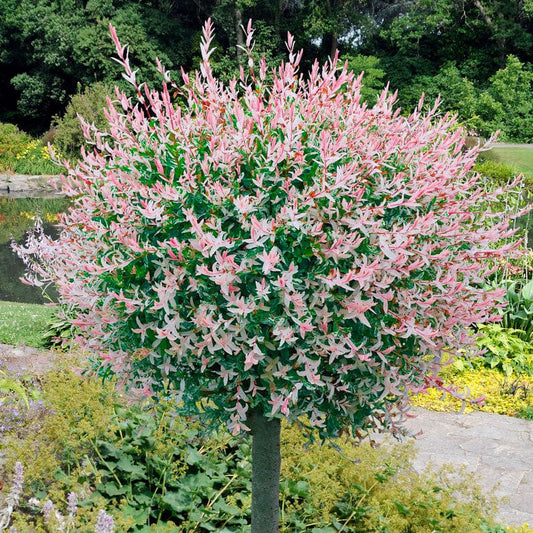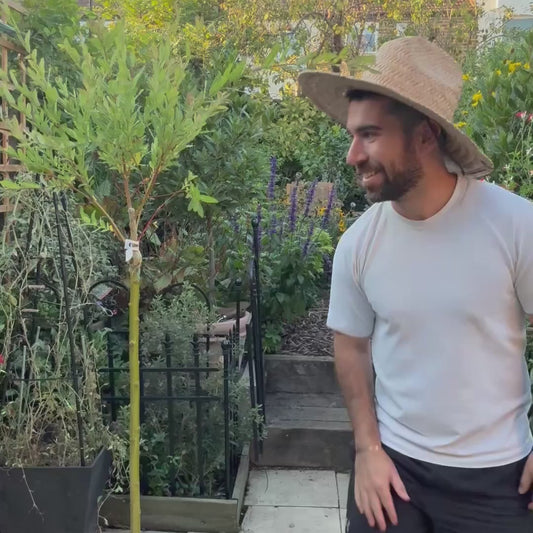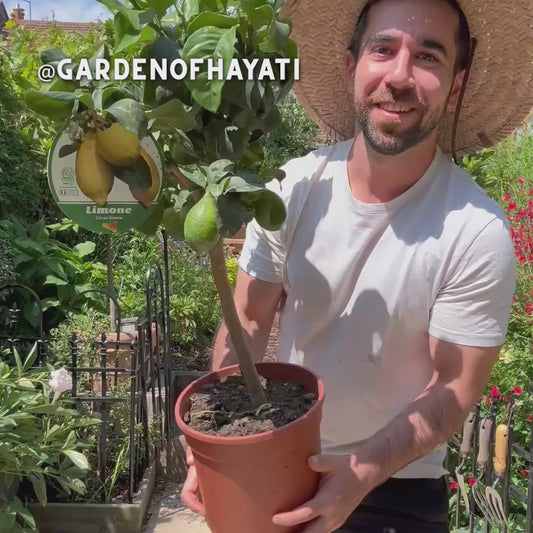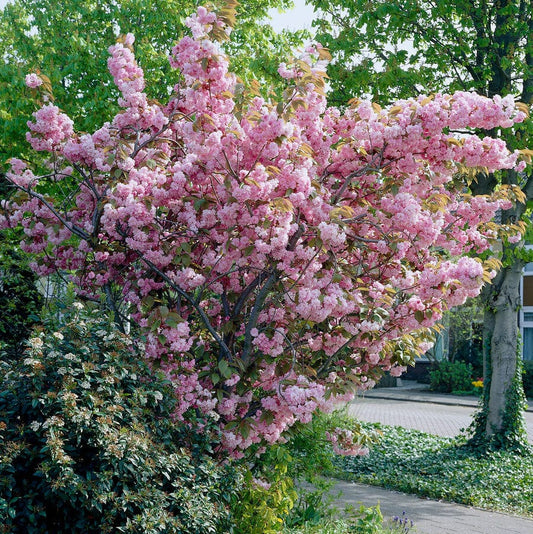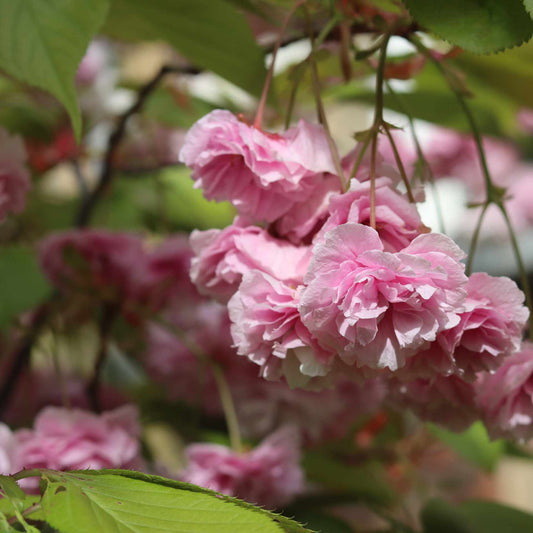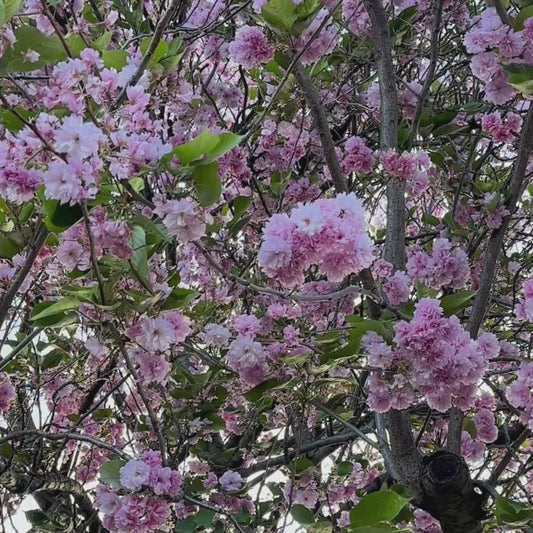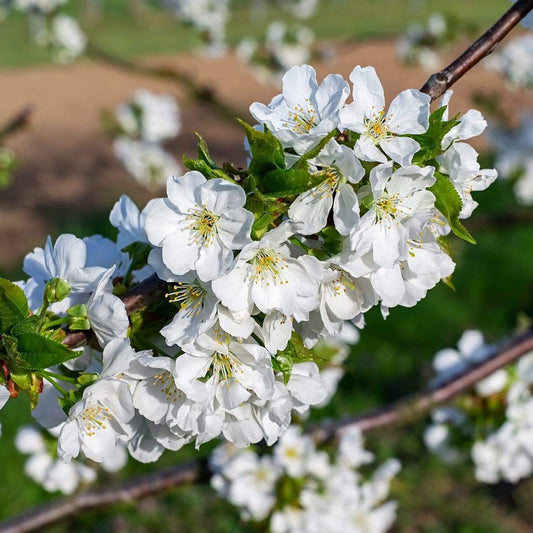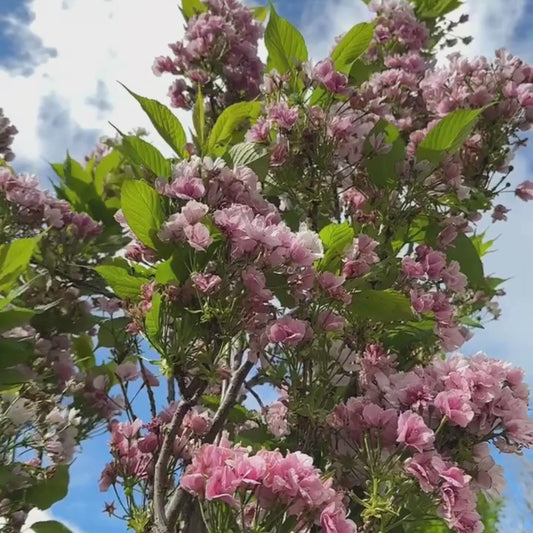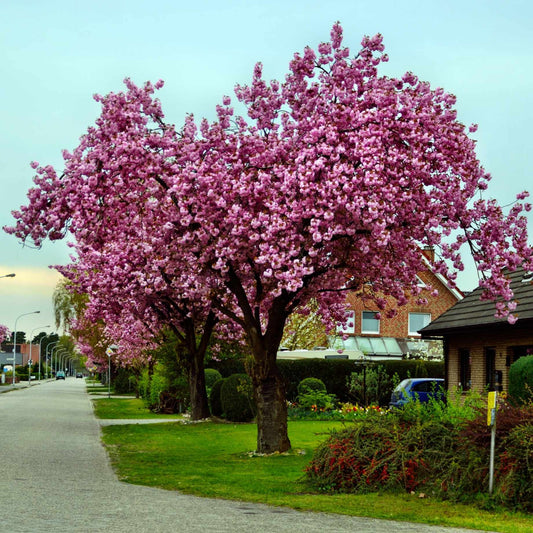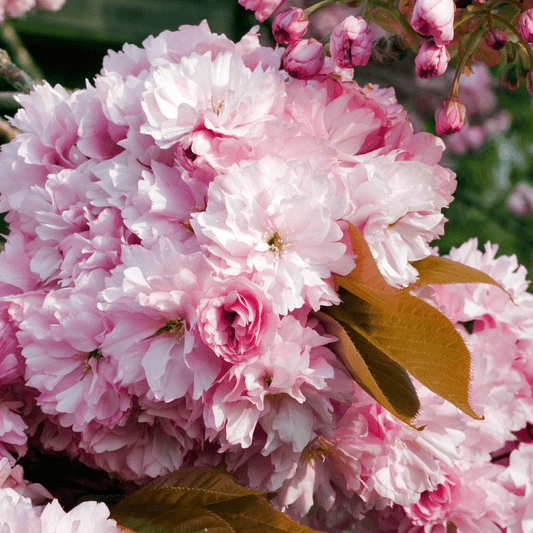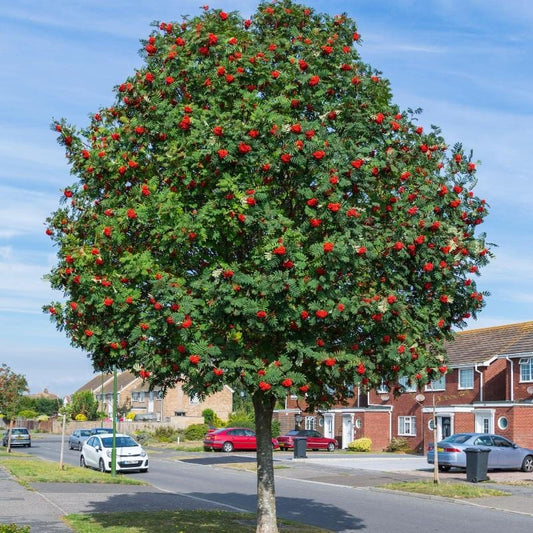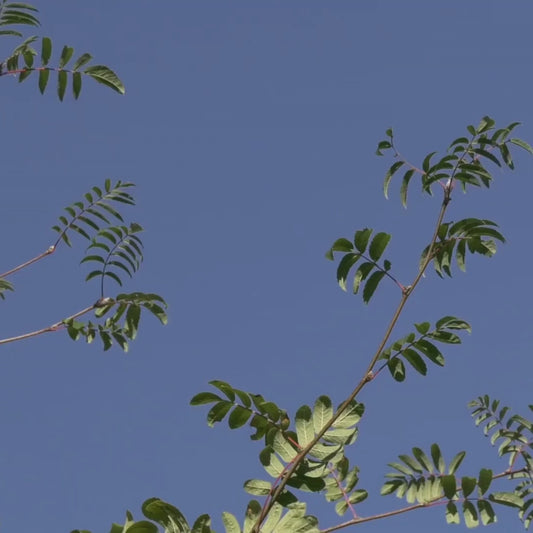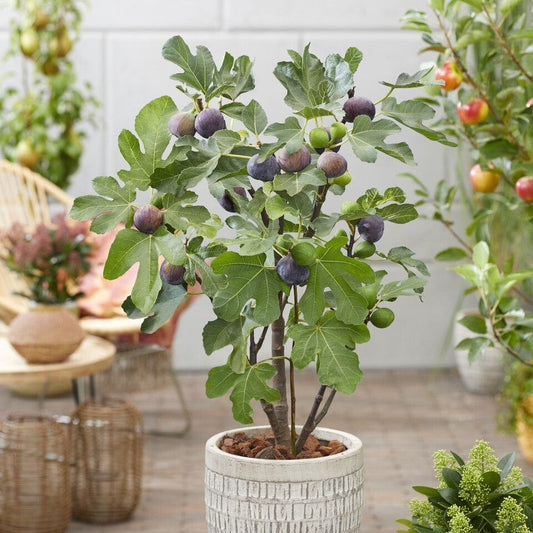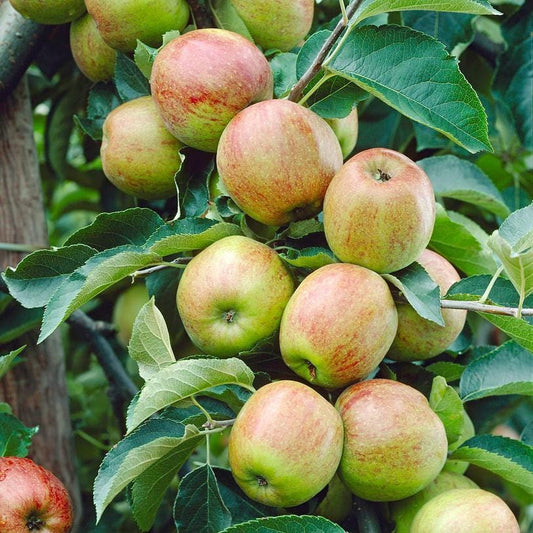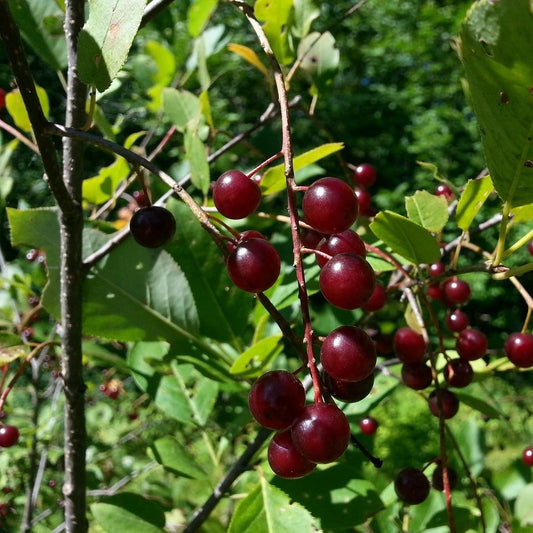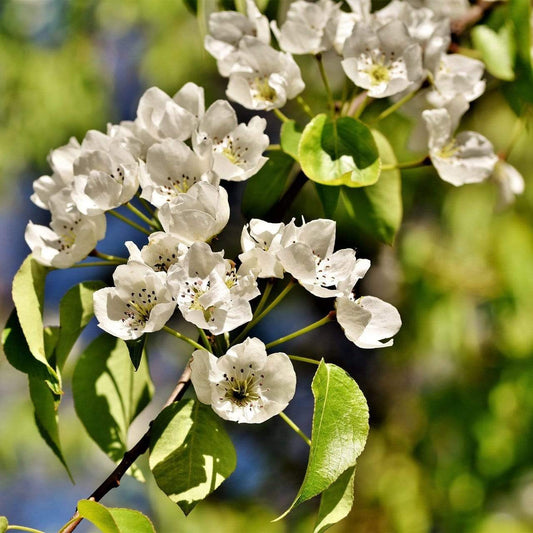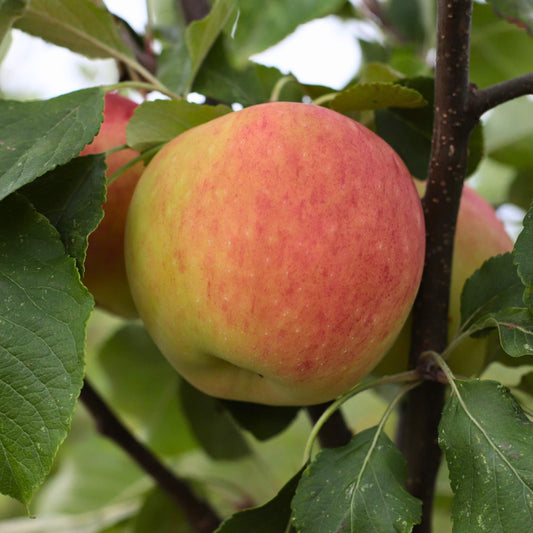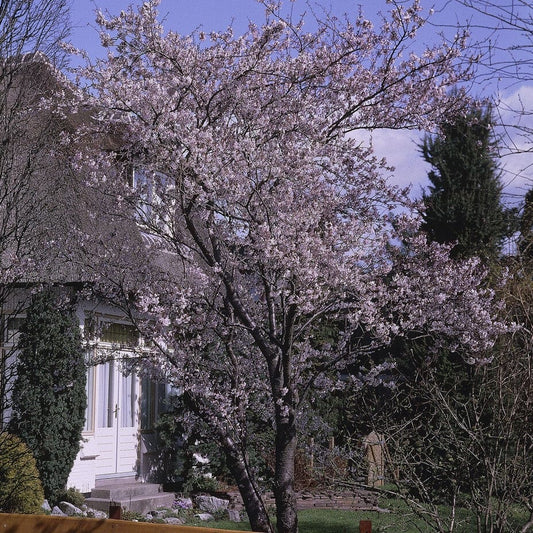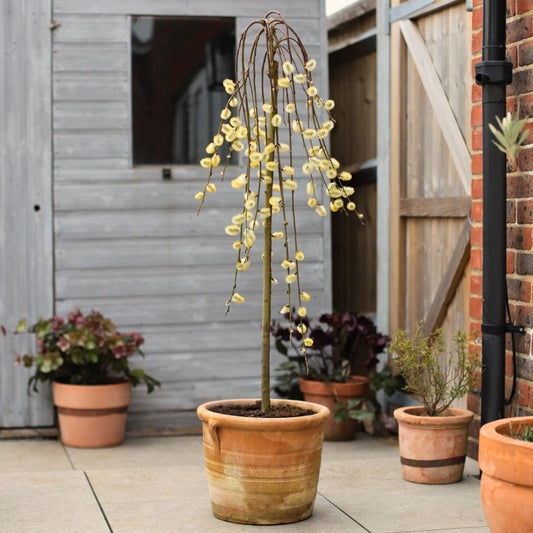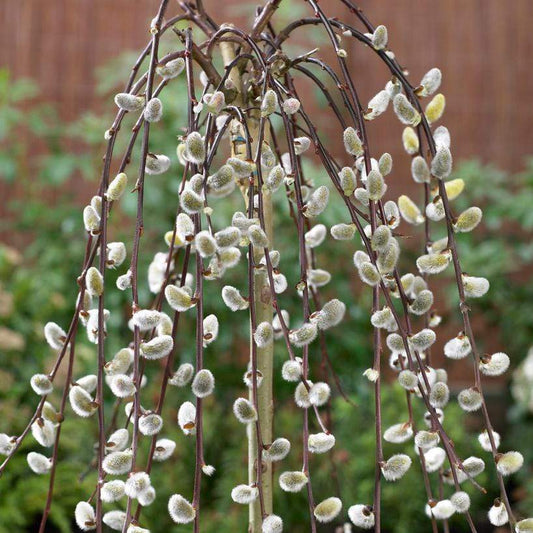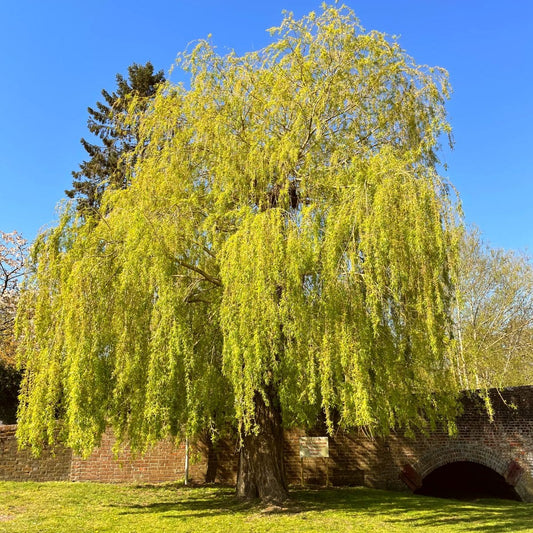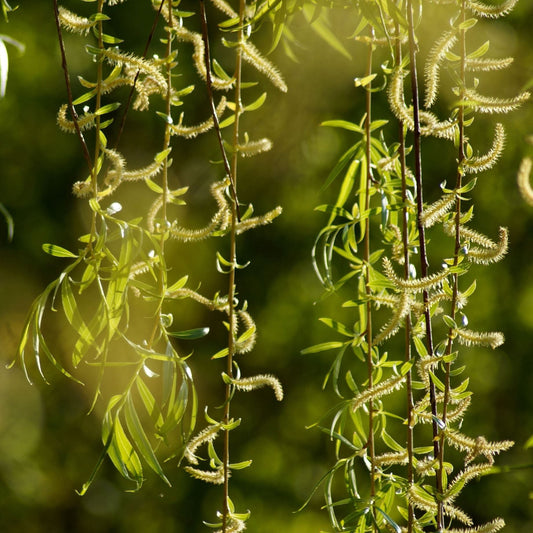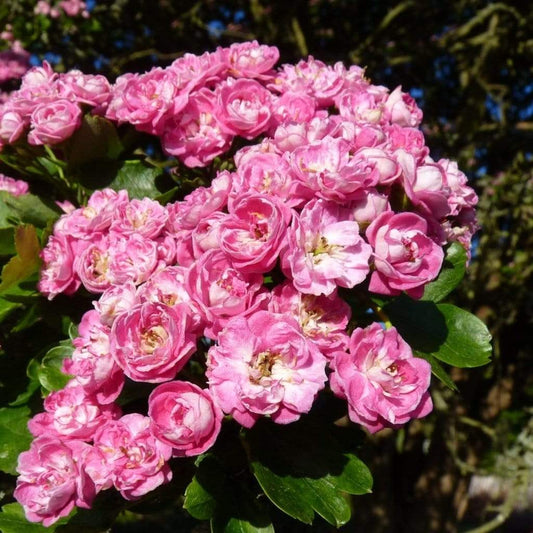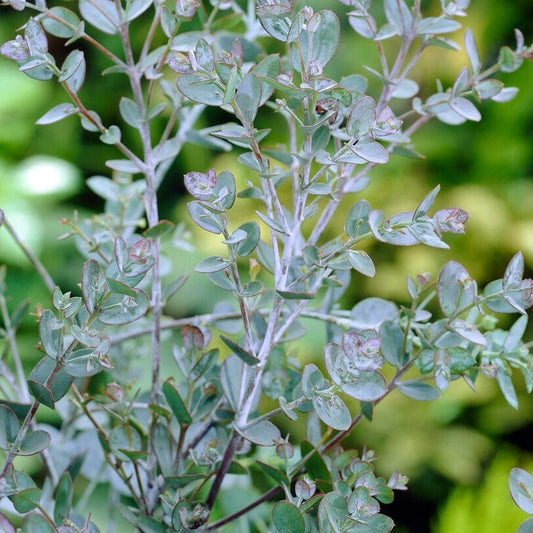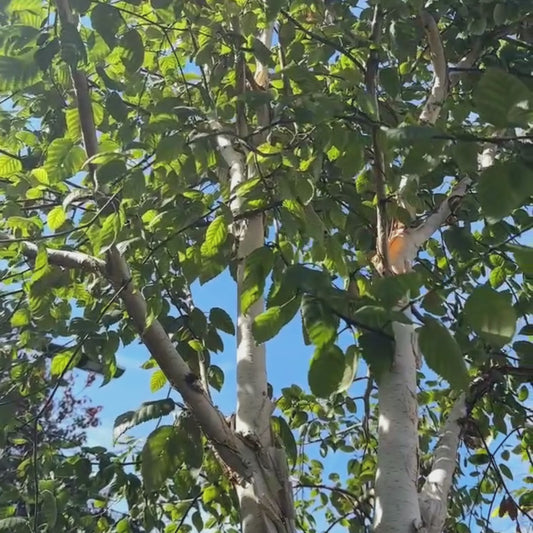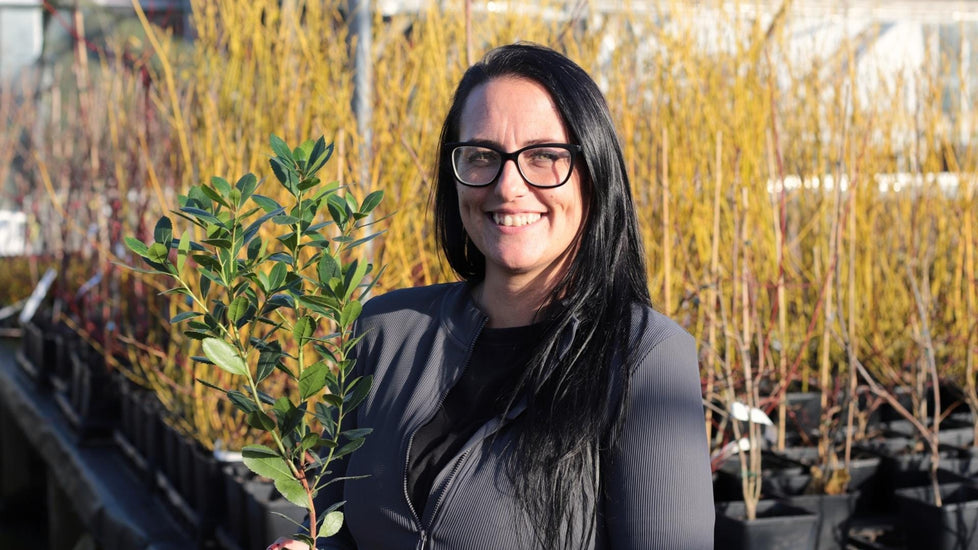Collection: Trees
Trees are our thing. Lovingly grown at our nursery, in the Vale of Evesham, by arboreal experts who really know their onions trees, our trees are stronger and healthier than other trees for sale, establishing quickly wherever you live. We’ve chosen the best varieties of fruit, ornamental and native trees, so we've got you sorted, whatever you're after.
Need help picking?
-
Regular price From £20Regular price
£22Sale price From £20UK Hardy Fig Tree | 'Brown Turkey'
By far the best fig for the UK
- Boasts a traditional, sweet figgy taste
- Fully hardy and well-suited to the UK climate
- Caramelise and serve with balsamic vinegar
- Pick in August and September
5 options available
-
Regular price From £30Regular price
£45Sale price From £30'Victoria' Plum Tree
Plums fit for a queen
- The iconic plum with a superb flavour
- Damp, cold or partial shade? No problem
- Makes the perfect plum frangipane
- Harvest from late August onwards
3 options available
-
Regular price From £25Regular price
£35Sale price From £25Flamingo Willow Tree | Salix integra 'Hakuro-Nishiki'
A riot of eyecatching colour
- Charming bushy tree
- Small tree - grows up to 2m
- Variegated pink, cream and green foliage
- Perfect for patio pots and front gardens
6 options available
-
Regular price From £25Regular price
£30Sale price From £25Grafted Patio Lemon Tree | 4 Seasons Lemon
Zingy lemons all year round
- Evergreen foliage and fragrant flowers
- Grafted for stronger growth
- Make the best lemon meringue pie!
- Fresh, zesty fruits throughout the year
5 options available
-
Regular price From £34Regular price
£38Sale price From £34Japanese Cherry Blossom Tree | Prunus serrulata 'Kanzan'
Spring and autumn show stopper
- Vase-shaped, but gently spreading over time
- Easily pruned to fit average sized gardens
- Clusters of double pink flowers
- Blossoms in March-May
2 options available
-
Regular price From £34Regular price
£38Sale price From £34Cheal's Weeping Cherry Blossom Tree | Prunus 'Kiku-shidare-zakura'
The little tree that packs a pink, fluffy punch
- Small, perfectly formed weeping cherry
- Can grow to 3.2m (depending on form)
- Rose pink, fluffy double flowers
- Clusters of blossom from April to May
3 options available
-
Regular price From £28Regular price
£32Sale price From £28'Sunburst' Cherry Tree
A superb dark cherry
- Decadent and devilishly rich
- Self fertile (doesn't require a partner)
- Ideal for morning smoothies
- Harvest from mid-July
2 options available
-
Regular price From £33Regular price
£38Sale price From £33'Conference' Pear Tree
The UK's favourite pear
- Soft, sweet and succulent
- RHS Award of Garden Merit winner
- Eat straight from the trug!
- Harvest from September
4 options available
-
Regular price From £34Regular price
£38Sale price From £34'Flagpole' Cherry Blossom Tree | Prunus Amanogawa
For the smallest of gardens
- Narrow columnar form with upswept branches
- Ideal for small spaces, growing to just 4x1m
- Semi-double, fluffy pink flowers
- Blossoms in April-May
2 options available
-
Regular price From £30Regular price
£37Sale price From £30'Braeburn Hillwell' Apple Tree
Improved version of 'Braeburn'
- Fresh, aromatic taste (eating)
- Lovely and low maintenance
- Bite into fresh and savour the fab flavour!
- Harvest from October to early November
3 options available
-
Regular price From £36Regular price
£38Sale price From £36'Pink Perfection' Cherry Blossom Tree
High impact flowering sensation
- Strong upright tree
- Ideal for small spaces, growing to 4x4m
- Fluffy, rose pink double flowers
- Blossoms in April
2 options available
-
Regular price From £38Regular price
£45Sale price From £38Mountain Ash Rowan Tree | Sorbus aucuparia
The ultimate wildlife tree
- Rounded, bushy tree
- Large tree - grows to 12m
- Spectacular autumn colour
- Suitable for all garden sizes
3 options available
-
Regular price From £22Regular price
£24Sale price From £22'Osborn's Prolific' Fig Tree
One heck of a lot of figs!
- Rich, sweet, melt-in-the-mouth flavour
- Among the most heavily-fruiting fig trees
- Try making a scrummy fig tarte tatin
- Figs ready to pick from August to September
2 options available
-
Regular price From £30Regular price
£40Sale price From £30'Stella' Cherry Tree
A familiar old favourite
- The perfect balance of sweet and tart
- RHS Award of Garden Merit winner
- Serve with ice cream and dark chocolate
- Harvest from late July to August
2 options available
-
Regular price From £30Regular price
£35Sale price From £30'Bramley's Seedling' Apple Tree
The UK's favourite cooking apple
- Sharp, cooks down to a rich flavour (cooking)
- A reliable heavy cropper
- If you want apple pies, come this way...
- Harvest from September (keeps to February)
3 options available
-
Regular price From £32Regular price
£50Sale price From £32'Cox's Orange Pippin' Apple Tree
A British classic!
- Wonderfully aromatic (eating)
- Tastes 10x better than supermarket bought
- Delicious eaten fresh or pressed for juice
- Harvest from September to October
3 options available
-
Regular price From £30Regular price
£40Sale price From £30'Morello' Cherry Tree
Make the ultimate cherry pie
- The best sour cooking cherry
- RHS Award of Garden Merit winner
- Perfect for a black forest gateau!
- Harvest from late July to August
2 options available
-
Regular price From £33Regular price
£37Sale price From £33'Green Williams' Pear Tree
A favourite since the 1700s
- Bursting with juice and sweetness
- Award of Garden Merit winner (RHS)
- Excellent for poaching (or eating fresh)
- Harvest from late August
2 options available
-
Regular price From £32Regular price Sale price From £32
'James Grieve' Apple Tree
Disease-resistant and delicious
- Sharp early apples, sweet later (dual)
- Award winner, renowned for its juiciness
- Makes great pies and crumbles
- Harvest in September
3 options available
-
Regular price From £36Regular price
£38Sale price From £36Pink Winter Flowering Cherry Tree | Prunus x subhirtella 'Autumnalis Rosea'
Flowers to brighten up winter
- Elegant spreading tree
- Ideal for small spaces, growing to 3x3m
- Dark pink buds softening to light pink
- Blossoms in November-March
3 options available
-
Regular price From £40Regular price Sale price From £40
'Kilmarnock' Dwarf Weeping Willow Tree | Salix caprea
A weeping tree… On your patio?!
- Proudly weeping tree
- Small tree - grows up to 2m
- Fuzzy grey-yellow catkins, deciduous foliage
- Can easily be grown on a patio
3 options available
-
Regular price From £38Regular price
£50Sale price From £38Golden Weeping Willow Tree | Salix 'Chrysocoma'
The iconic weeping tree!
- Elegantly weeping tree
- Large tree - grows up to 12m
- Chartreuse leaves becoming glossy green
- RHS Plants for Pollinators
2 options available
-
Regular price From £35Regular price
£54Sale price From £35Red Hawthorn Tree | Crataegus laevigata 'Paul's Scarlet'
Intensely vivid, hot pink blooms
- Round-crowned, bushy tree
- Medium tree - grows up to 8m
- Myriad fully-double pink blooms
- RHS Award of Garden Merit winner
2 options available
-
Regular price From £22Regular price Sale price From £22
'Madeleine Des Deux Saisons' Fig Tree
Grown in the Versailles gardens!
- Sweet with undertones of strawberry
- Often produces two crops per season
- Bake a fig, coffee and hazelnut cake
- Harvest in July and again in September
2 options available
-
Regular price From £20Regular price
£22Sale price From £20Hardy Eucalyptus Bush | Eucalyptus gunnii
Superb silvery, fragrant foliage
- Can be shaped in various ways!
- Can be kept as short as you want
- Scented, glaucous leaves, dainty white blooms
- RHS Award of Garden Merit winner
2 options available
-
Regular price From £45Regular price
£58Sale price From £45'Flavorcot'® Apricot Tree
Flavour by name and nature!
- Fab flavour, arguably the best of any apricot
- Reliably high-yielding in warm summers
- Bake a batch of apricot shortbread
- Harvest from late July to September
1 option available
-
Regular price From £35Regular price
£54Sale price From £35Silver Birch Tree | Betula pendula
An iconic UK native species
- Narrow, delicately pendulous tree
- Large tree - grows higher than 12m
- Lovely green leaves and bright white bark
- RHS Award of Garden Merit winner
2 options available
South Downs National Park
Meet Danielle
110 years' expertise free with every tree
Danielle's nursery has been growing trees in the South Downs National Park for over a century, and it shows. Dug up and sent straight to your garden at between 18-36 months old, their quality rootstocks, expert pruning and natural pest control mean that these traditionally field-grown trees are the hardiest you can get.
Need help picking?
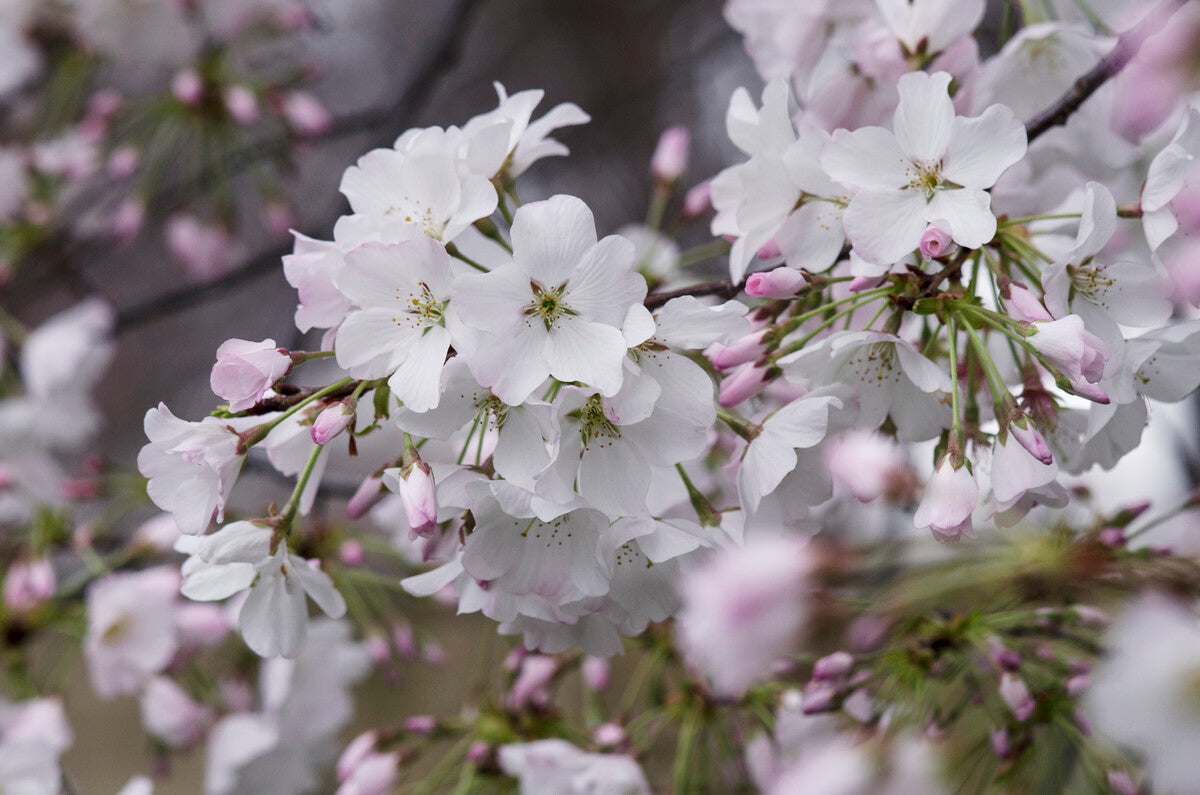
How to choose your tree
The perfect tree for your garden is one that is the right size and type for your garden, suits the position you’ve chosen for it and whose care needs match the time you have to spare. But most importantly, it’s the tree you love most - whether that’s the juiciest apple, the most colourful cherry blossom or the one that brings the most birds to your garden, we’ll help you find it with this easy-to-follow guide.
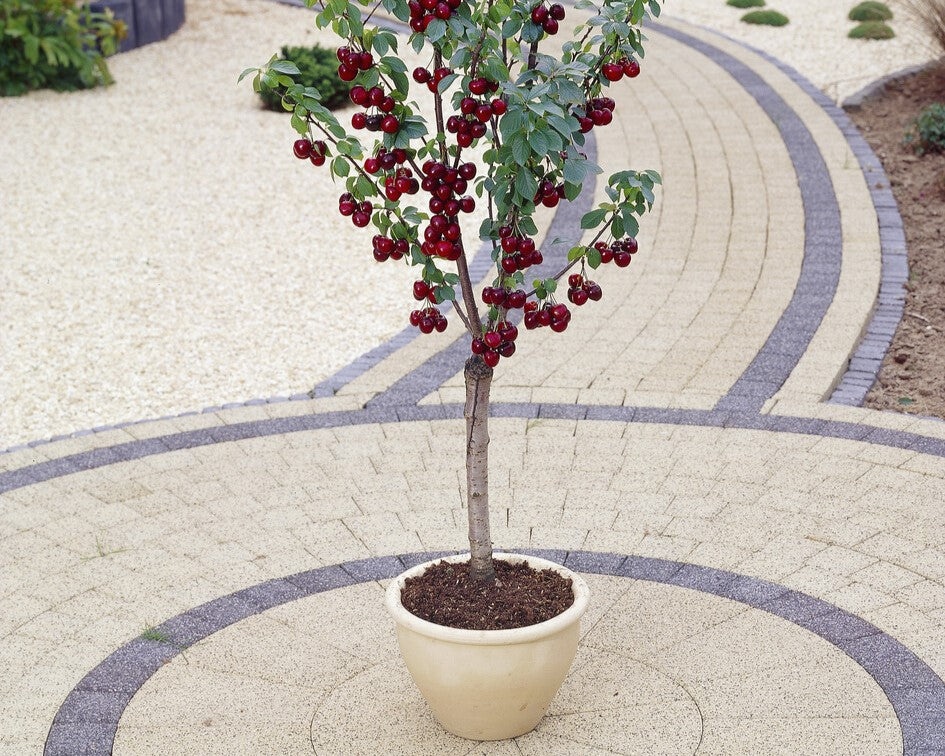
What's the deal with rootstocks?
The eventual size of a fruit tree depends on its rootstock. This is the lower part of the tree, which is grafted to a scion (the flowering or fruiting part of the tree) to produce a tree with the best characteristics of both, which grows to a specific size. When choosing a tree, you should check the rootstock to find out what size the tree will grow to. Common apple rootstocks include M27, M9, M26, MM106 and M25. Popular pear rootstocks include Quince A and Quince C. For cherry trees, its usually Colt or Gisela 5. As for plums, look for Pixy or St Julien A (SJA). Peaches and apricots also use SJA.

Getting the best from your tree
Most trees prefer to be planted in a sunny or partially-shaded spot out of the way of any cold or drying winds, and in well-draining soil. You’ll need to water them regularly until their root systems are established (this takes about a year) but after that, they’ll get most of their needs met by the rain. To keep your tree healthy, tidy and at a manageable size, you’ll probably need to do some
Trees FAQs
What tree should you get?
It depends what you’re looking for! If you want spectacular flowers, then cherry blossoms, crabapples and hawthorns are your best bet. As for amazing autumn colour? Liquidambar, ginkgo and maples hold the key. Do you want your garden to offer more than just a visual aspect? There are all kinds of fruit trees you can consider, including apples, , cherries and plums. There’s huge native trees, compact patio trees and trees with gruesome stories to tell…
How do you plant trees?
Whether you buy a potted or bare root tree, the instructions for planting are very similar. Dig a planting hole twice as wide and as deep as the plant’s rootball. Position your tree in the centre of the hole, then backfill with soil. Firm the soil down with your foot, then give the tree a good watering. Using a stake and tree tie, attach your tree to give it an extra bit of support. Check out our complete guide to planting trees for more information.
What conditions do trees like?
It will vary from tree to tree, but there are some general conditions you can refer back to as a sort of framework when planting a tree. Most trees prefer moist but well-drained soil with good levels of fertility. If your soil is poor, consider amending with some well-rotted manure or compost. Full sun to partial shade suits most trees, while an annual application of slow-release, general fertiliser around the tree’s base can be beneficial.
What’s the difference between bare root and potted trees?
Bare root trees are those that have been lifted from the ground between November and March during the plant’s dormant season. It is sent at this time as just a stem and the root network. The roots are then soaked prior to planting directly in the soil. Potted trees are those that have been grown in soil/compost and will be sent on in that pot. Bare root trees are often cheaper than their potted counterparts, and can be better for the environment.
Why do we grow trees in Air-Pots®?
By growing our trees in innovative Air-Pots®, they develop a healthier, more fibrous network of roots and take to their planting location more quickly and more successfully. They use a technique called air-pruning to develop that root system. Find out more in our comprehensive guide to Air-Pots®.
Happy plants make happy customers
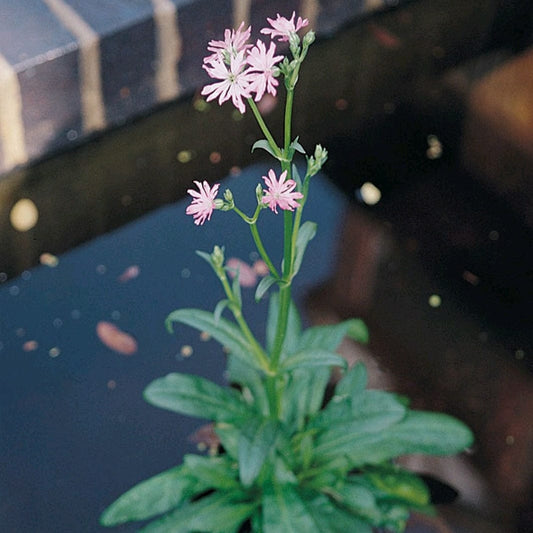
Plants arrived in great condition and very promptly. Well established - much better than the ones I got at my local garden centre.
Monica Spence
| 24 May

Yet again this company delivered good healthy plants, exactly as shown in photos, well packaged and within delivery time quoted. Recommend!
Jacqueline Burgess
| 2 Jun
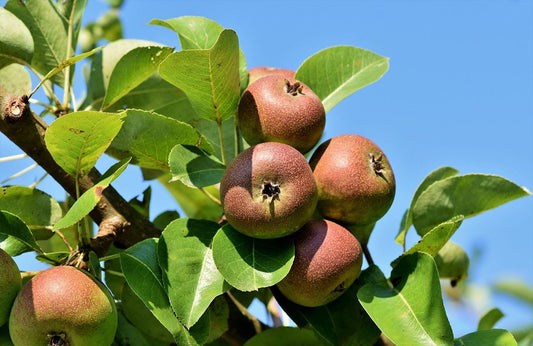
I continue to be so impressed with Roots. Their customer care, knowledge of their subject: from planting hedges to pruning roses and more, has been a great support.
Judy Lane
| 23 Oct

The plant arrived looking vigorously healthy, which brings a smile to your face, extremely well protected in its packaging.
Martyn Hill
| 5 Jul
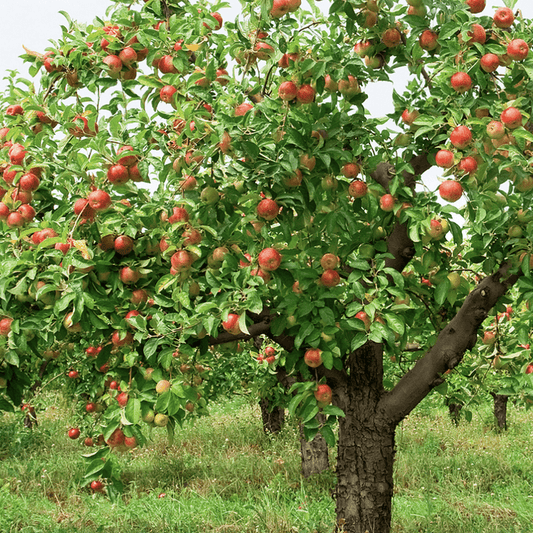
As a non-gardener, I found my whole experience brilliant. Great information & advice available on the website, great range of products & prices are brilliant.
John-Paul
| 22 May

Wonderful plants and great customer service... really surprised to find that the plants are better than those you would get at your local garden centre.
Gavin Wilcock
| 8 Nov
Fighting plastic waste
Delivering fresh from the nursery
Supporting UK growers
